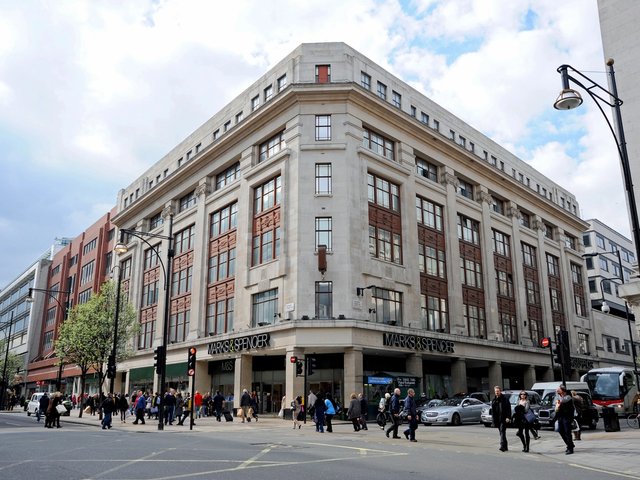Architectural heritage campaigners have called for urgent reform of national planning policy, after the UK's deputy prime minister Angela Rayner gave the go-ahead for the demolition of the flagship Marks & Spencer (M&S) building in London’s Marble Arch.
Describing the decision as “wilfully myopic”, they say that guidelines need to stop incentivising demolition and catch up with the science around climate change.
The 1929 Orchard House has been the subject of a fierce long-running battle between the retailer, who wants to knock it down and replace with a new building, and campaigners, backed by the previous levelling up, housing and communities secretary, Michael Gove, who had blocked plans for its demolition.
Campaigners have argued that the embedded carbon locked up in the concrete of the current building means it would be more sustainable to refurbish it, rather than to demolish and construct a new one.
This was part of the reasoning cited by Gove when he refused to grant permission in 2023. However, his decision was thrown out by a judge in March, following an appeal hearing, which ruled that the politician's reasoning was at odds with national planning policy and ordered a review. With a change of government has come a new verdict, and M&S has been given the green light to send in the bulldozers.
The campaign group Save Britain’s Heritage is now calling for the government to set out clear rules to promote refurbishment over destruction. They want guidance to prioritise reusing historic buildings in national planning policy; to end permitted development rights that allow building owners to sidestep the planning permission process to achieve quick demolition permits; and for the carbon emitted by the construction of buildings to be counted, not just the carbon emitted when they are in use. They say current policy focuses on so-called “operational carbon”, yet “embodied carbon” is also significant.
Henrietta Billings, the director of Save Britain’s Heritage, said: “Rethinking our wasteful knock-it-down-and-start-again approach to development and reusing and updating existing buildings like M&S Oxford Street is a win-win. It’s good for the planet and it’s good for our towns and communities.
"No-one is suggesting these buildings are pickled in aspic—it’s a pro-growth approach. Restored and transformed buildings have turbo-charged regeneration all over the country, everywhere from Tate Modern in London to former department stores in Bournemouth, Bristol, Edinburgh and Gloucester.”
Catherine Croft, the director of the Twentieth Century Society, which campaigns to save buildings with heritage and design value built after 1914, tells The Art Newspaper: “The chance to set a vision for a more sustainable and creative Britain that reuses its built-heritage has been squandered. Green growth? Not on this evidence."
She said she still believed a compromise could be found: "We note that the secretary of state agrees with Historic England that the proposed development is 'a missed opportunity to retain, reuse and adapt the good quality elements of the site’, a view long advanced by C20 and Save Britain’s Heritage. We remain convinced that it would be far better if a compromise solution could be found that delivers the jobs, growth and public benefits that everyone wants to see, without resorting to the wrecking ball."
The environmental impact of the project has been contested, with the retailer claiming that building a new nine-storey office and retail complex would actually be a net gain in terms of carbon emissions, claiming the new structure would be one of the most sustainable buildings in the country. The chief executive officer of M&S Stuart Machin welcomed Rayner’s decision: “I am delighted that, after three unnecessary years of delays, obfuscation and political posturing at its worst under the previous government, our plans for Marble Arch—the only retail-led regeneration proposal on Oxford Street—have finally been approved.
“We can now get on with the job of helping to rejuvenate the UK’s premier shopping street through a flagship M&S store and office space, which will support 2,000 jobs and act as a global standard-bearer for sustainability.”
The architecture critic Hugh Pearman disagrees, saying that if M&S could not reuse the building it should sell it to someone who could. He tells The Art Newspaper: "As a society we've really got to get out of the mindset that serviceable old buildings, of whatever style or period, are just inconveniences to be disposed of because knocking them down and starting from scratch looks somehow easier. It's also a bit rich to claim that a new building can magically be 'a global standard-bearer for sustainability' when it involves such destruction and emissions of locked-up carbon in the previous building.” He added: “They should sell the present building to someone who can see its conversion potential."
Alec Forshaw, the former head of conservation at Islington Council and an expert witness on heritage and planning at the public inquiry into the M&S case, warns that other non-listed buildings were under threat without reform of government policy. He says: “The demolition of Orchard House will be a sad loss for Oxford Street and shows how vulnerable are unlisted buildings located outside conservation areas. Heritage-led regeneration, rather than demolition and redevelopment, needs to remain at the forefront of reimagining our high streets.”






